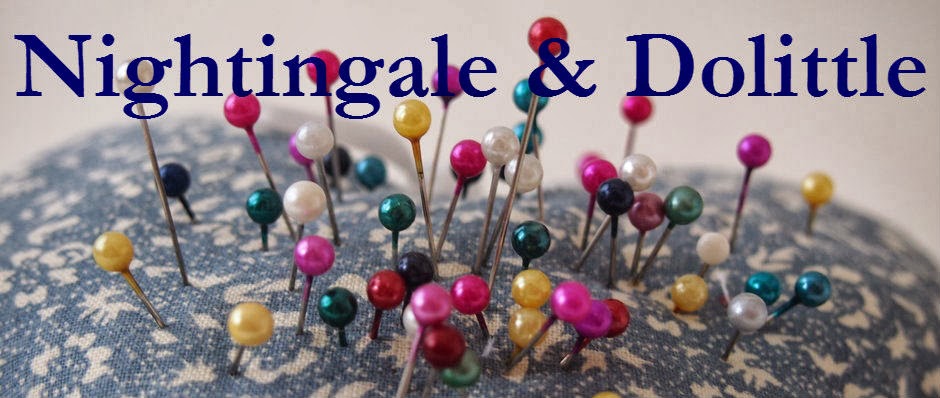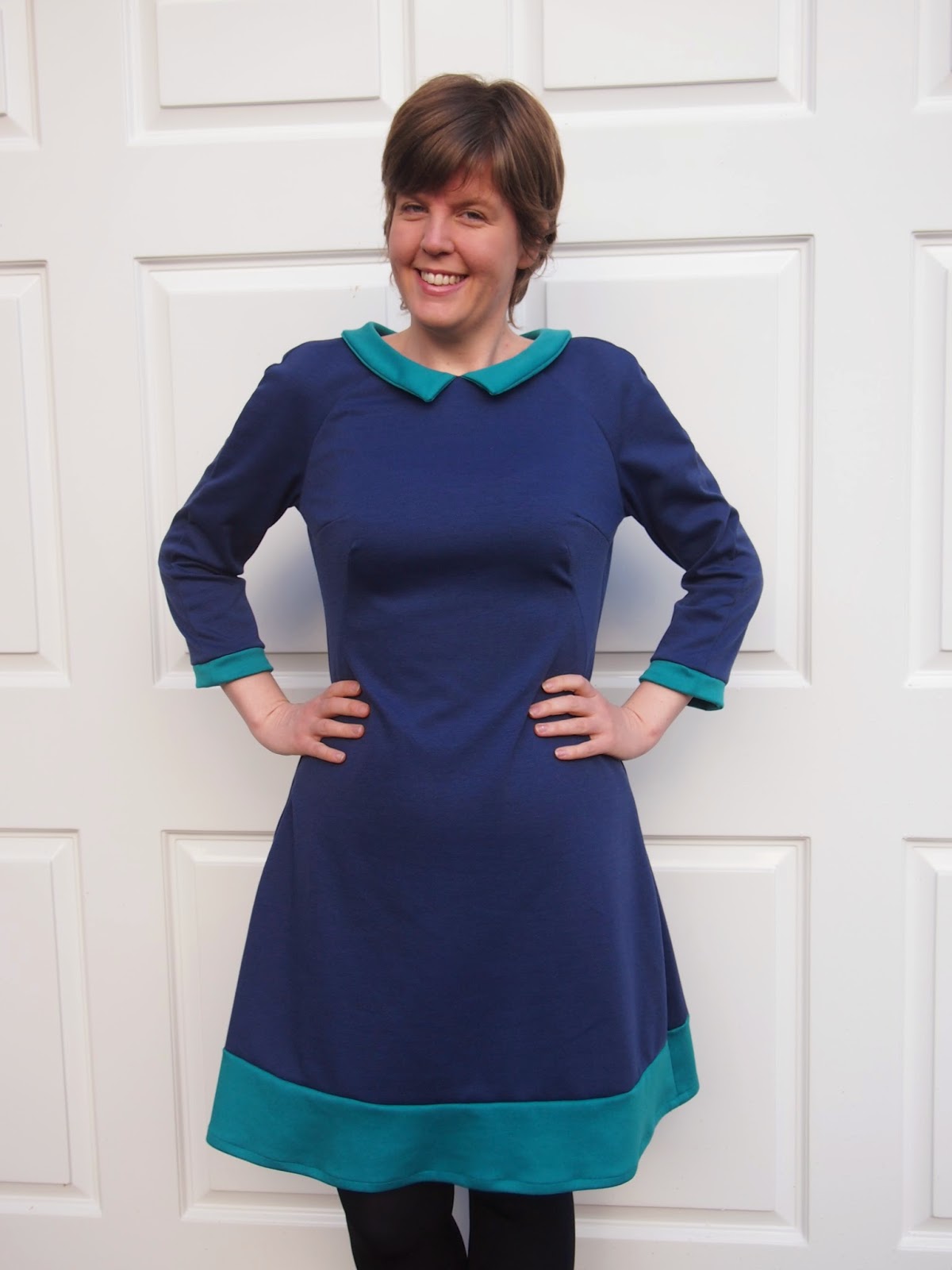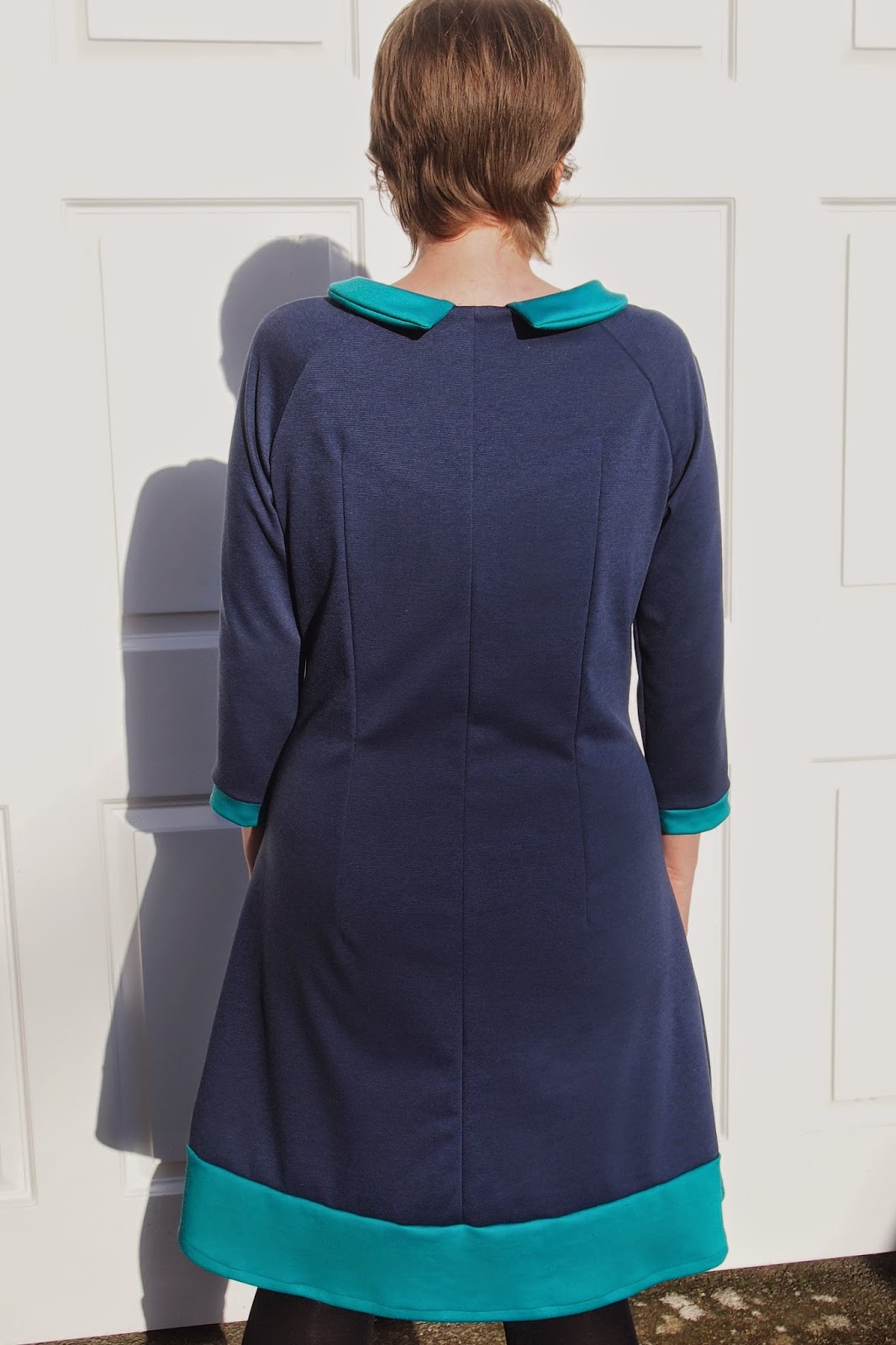I'll be the first to admit that I wasn't instantly convinced that Françoise would be for me when Tilly released it - I generally prefer fit and flare styles and I'm never really sure whether shift dresses particularly suit me and my pear-shaped frame. But then I saw versions start to pop up around the blogosphere and I realised that the French darts gave the dress a flattering shape around the waist that would probably work for me, and it's always good to step out of your comfort zone every now and then (and, let's face it, Tilly's contest was also quite a good incentive!) so I decided to give it a go. Spoiler alert: I'm really glad I did!
In terms of size, I used a size 5 for the bust and waist, and graded out to a 6 at the hips. I also added quite a bit of length - about 1.5 inches in the bodice section (a standard adjustment for me) and 4 inches in the skirt because I don't feel massively comfortable in mini dresses and prefer skirts to hit nearer to knee length.
There's also the obvious slight change I made of adding the colour-blocked sections at the hem and cuffs. For the skirt hem, I just decided how big I wanted the contrast section to be (4 inches plus the hem allowance in case you're wondering) and marked that onto my pattern piece, cut the main colour at this length and used the bottom section of the pattern piece to draw out the piece for the contrast hem (with seam allowances added to both the main and contrast colour sections).
For the cuffs, I drafted pieces that extended from the sleeve, cut 2 for each sleeve which I then joined together along the bottom edge to form the bottom of the cuff, before joining the cuffs on to the sleeve. I'm probably not doing a very good job of explaining that am I? It's essentially the same method that I was familiar with from making my Cami dress, which you can see in a tutorial here, but omitting the extra opening on the cuff. Hopefully that makes more sense now, if not let me know!
In terms of fabric, as one of Tilly's suggestions was double knit, I decided to use two different colours (navy and turquoise) of Romanit jersey (which I'm pretty sure is also known as ponte) from myfabrics. I think it was a good choice to make, as it's given me a dress that's super comfy and nice and cosy for this time of year, and there's the added bonus that you might have noticed in the photo above that I didn't need to put the zip in because it pulls on easily as it is - never a bad thing! And that helped to make this a pretty speedy dress to put together.
The fabric feels nice to wear and was generally OK to sew with, but it doesn't press that well so it did cause a couple of problems in some areas, mainly in the collar. I originally intended to swap the collar for a Peter Pan one (just because I love Peter Pan collars), but the fact that the fabric didn't press well meant that it just came out looking a mess. Thankfully the pointed collar from the pattern turned out much nicer!
All the layers of fabric that I ended up with around the neckline after adding the collar and facings were also quite bulky and the facing didn't want to turn in and lie flat even after understitching - I should possibly have used a thinner fabric for the facing really but I didn't have anything suitable. Steaming solved some of the problem, and after I'd done that, I secured the facing in place by stitching in the ditch down the sleeve and shoulder seams for a centimetre or two under the collar. Possibly not technically the right solution, but it worked so it's fine by me.
Overall, Françoise is a really great little dress. As you'd expect from Tilly's patterns, the instructions seem really clear and thorough (I say seem, because I mainly used the photos to see what I should be doing and just skim read the instructions), so it would be a good option for beginners but is still a fun pattern if you've got a bit more experience. I'm really pleased I chose to make it in a knit, because I feel like it looks quite smart but at the same time it's SO comfy. Being honest, it's never going to completely cure me of my love for fitted bodies and twirly skirts, but I can definitely see myself making more versions of the Françoise in the future. I'm on the lookout for a pretty patterned double knit for my next version - has anyone seen any? Although that will have to wait until after I've finished quite a few secret projects - is anyone else up to their elbows in making Christmas presents at the moment or it is just me?!


















































